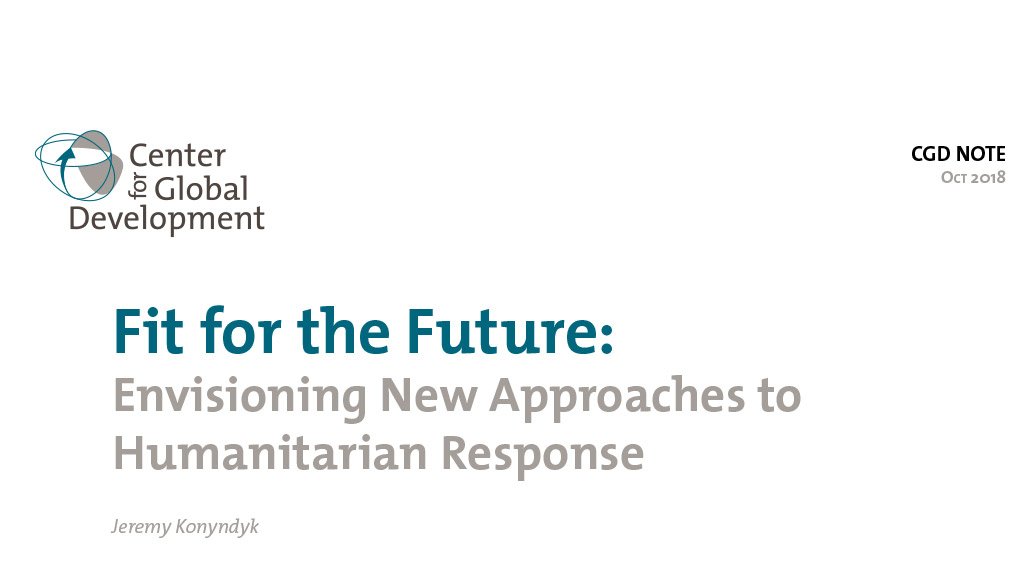- Fit for the Future: Envisioning New Approaches to Humanitarian Response0.14 MB
The traditional humanitarian system faces a paradox. As the world contends with the highest levels of forced displacement and acute need in a generation, humanitarians are reaching more people than ever before yet falling further and further short of global need. A fragmented global aid architecture, with its roots in the mid-twentieth century, is struggling to adapt to the demands of the twenty-first. Humanitarian response today reaches too few people, allocates resources inefficiently, and largely fails to listen to vulnerable populations. And despite commitments to make humanitarian response “as local as possible, and as international as necessary,” the system at large continues to default to an international-first approach.
For more than a decade, reform efforts have attempted to put crisis-affected people at the center of humanitarian response, and make the system more cohesive and responsive. These reforms have produced ever-heavier coordination systems and technocratic guidance, but have targeted the symptoms of the system’s shortcomings rather than the causes. Traditional humanitarian response remains plagued by deep power imbalances, needless rivalries between organizations, and perverse institutional incentives.
These structural factors disenfranchise vulnerable populations and fragment aid operations to suit aid providers’ mandates. Humanitarian response aspires to be demand-driven: oriented around and responsive to the prerogatives of the vulnerable people it serves. Yet its power dynamics and organizing structures make it fundamentally supply-driven: oriented heavily toward the prerogatives of the institutions that finance and operate the traditional humanitarian system. Meaningfully tackling these issues of power and structure has been a red line in past reform efforts. As a result, the reforms of the last 15 years have had noble aspirations but delivered only modest progress.
Report by the Centre for Global Development
EMAIL THIS ARTICLE SAVE THIS ARTICLE ARTICLE ENQUIRY
To subscribe email subscriptions@creamermedia.co.za or click here
To advertise email advertising@creamermedia.co.za or click here











